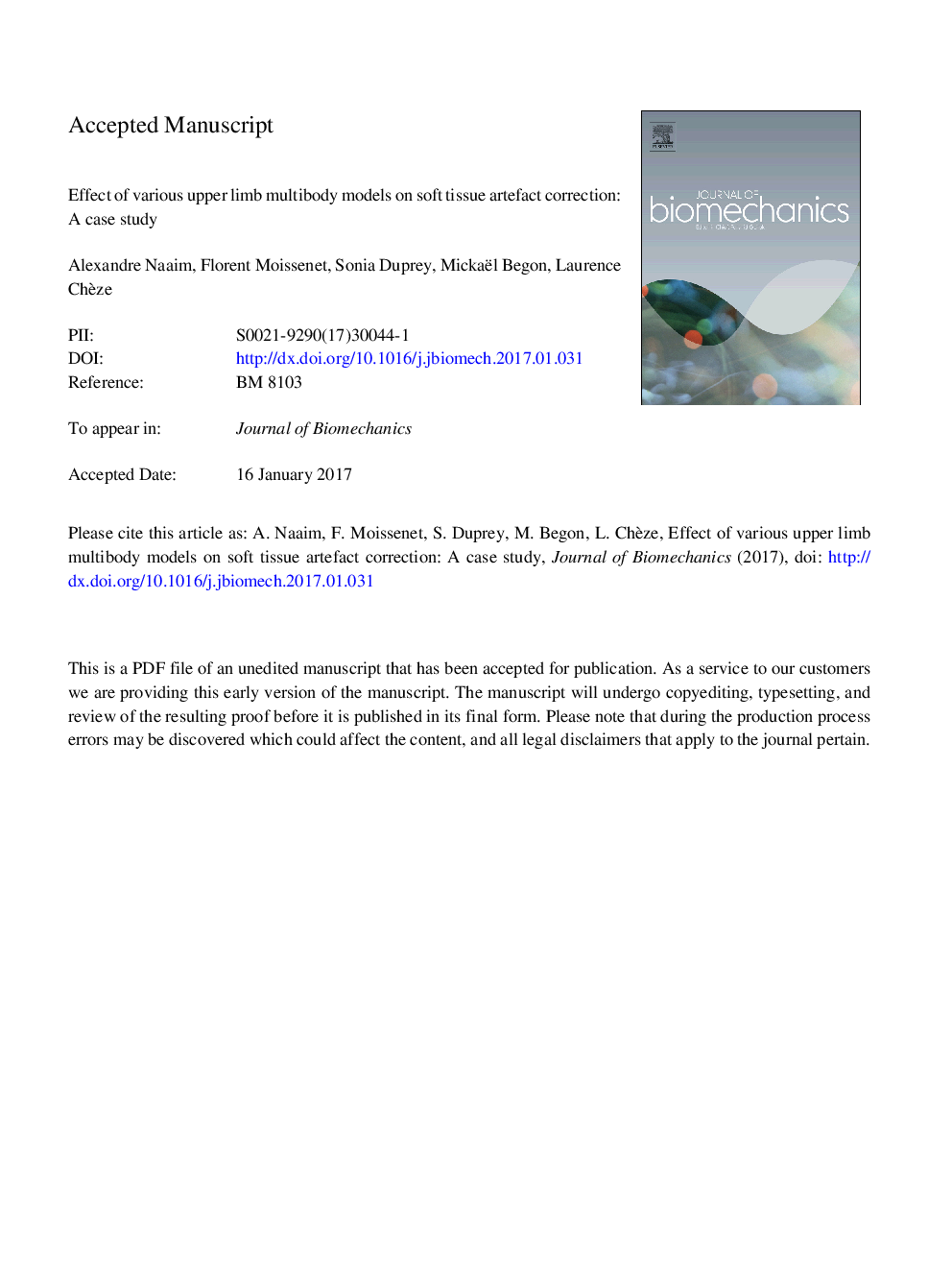| Article ID | Journal | Published Year | Pages | File Type |
|---|---|---|---|---|
| 5031893 | Journal of Biomechanics | 2017 | 30 Pages |
Abstract
Soft tissue artefacts (STA) introduce errors in joint kinematics when using cutaneous markers, especially on the scapula. Both segmental optimisation and multibody kinematics optimisation (MKO) algorithms have been developed to improve kinematics estimates. MKO based on a chain model with joint constraints avoids apparent joint dislocation but is sensitive to the biofidelity of chosen joint constraints. Since no recommendation exists for the scapula, our objective was to determine the best models to accurately estimate its kinematics. One participant was equipped with skin markers and with an intracortical pin screwed in the scapula. Segmental optimisation and MKO for 24-chain models (including four variations of the scapulothoracic joint) were compared against the pin-derived kinematics using root mean square error (RMSE) on Cardan angles. Segmental optimisation led to an accurate scapula kinematics (1.1° â¤Â RMSE â¤Â 3.3°) even for high arm elevation angles. When MKO was applied, no clinically significant difference was found between the different scapulothoracic models (0.9° â¤Â RMSE â¤Â 4.1°) except when a free scapulothoracic joint was modelled (1.9° â¤Â RMSE â¤Â 9.6°). To conclude, using MKO as a STA correction method was not more accurate than segmental optimisation for estimating scapula kinematics.
Related Topics
Physical Sciences and Engineering
Engineering
Biomedical Engineering
Authors
Alexandre Naaim, Florent Moissenet, Sonia Duprey, Mickaël Begon, Laurence Chèze,
